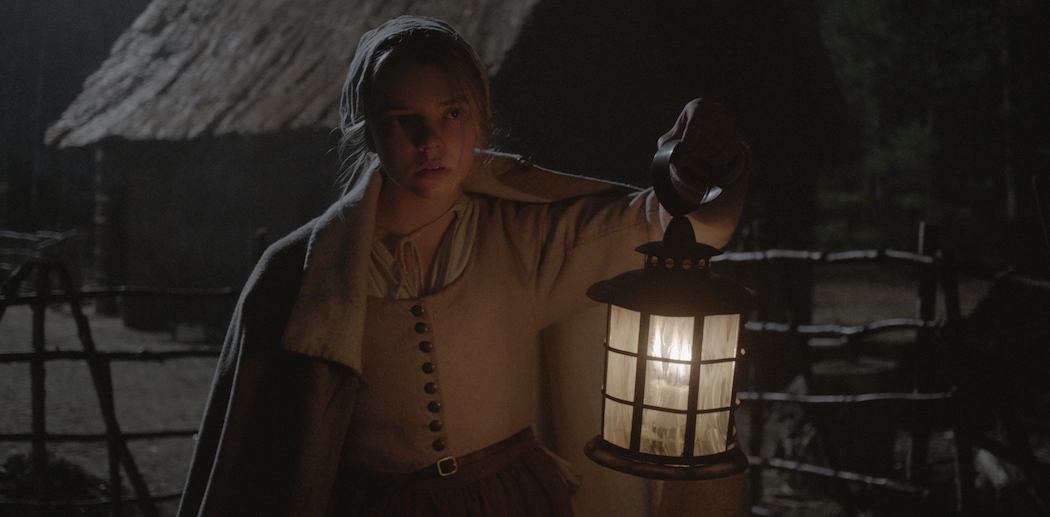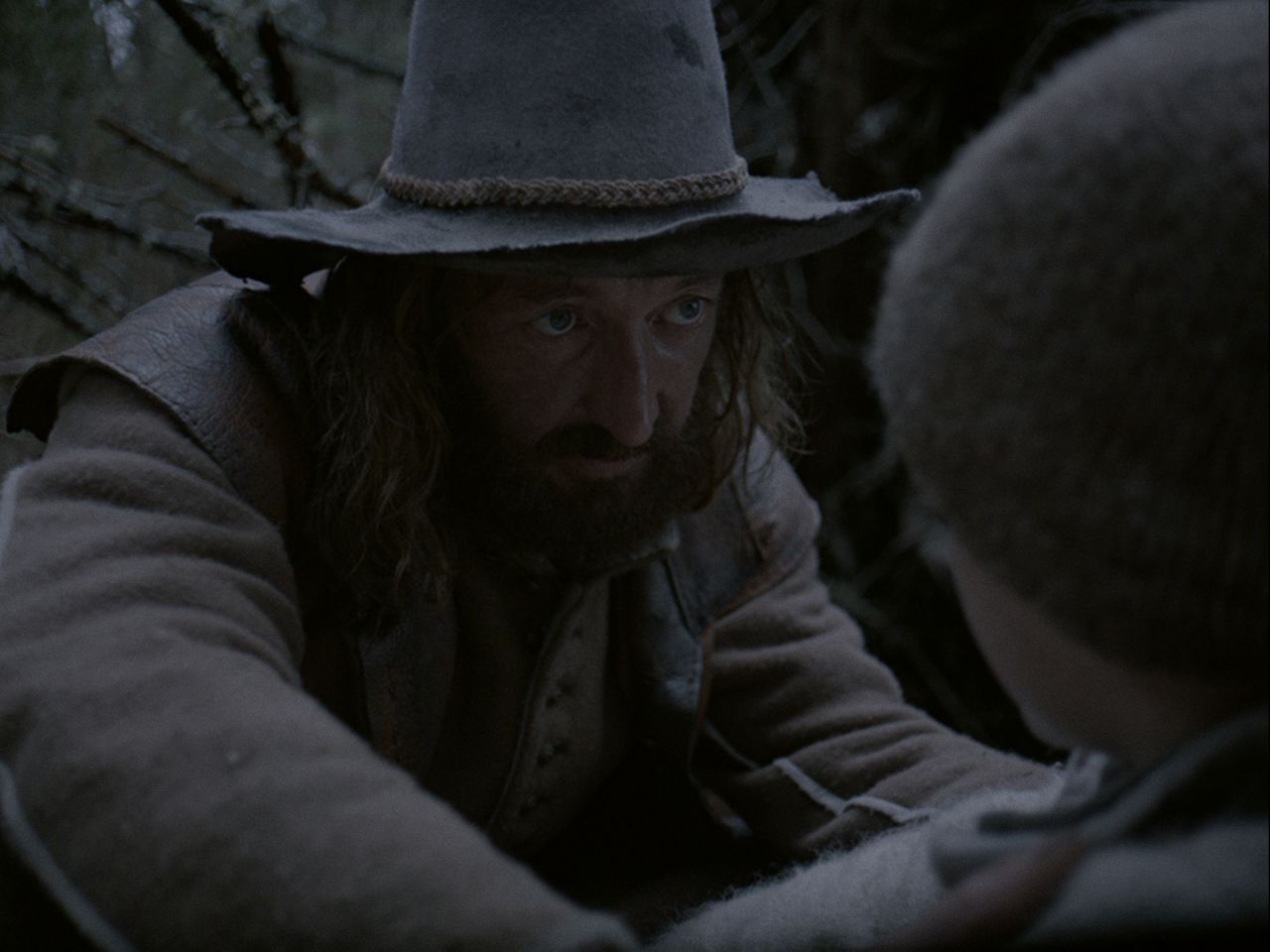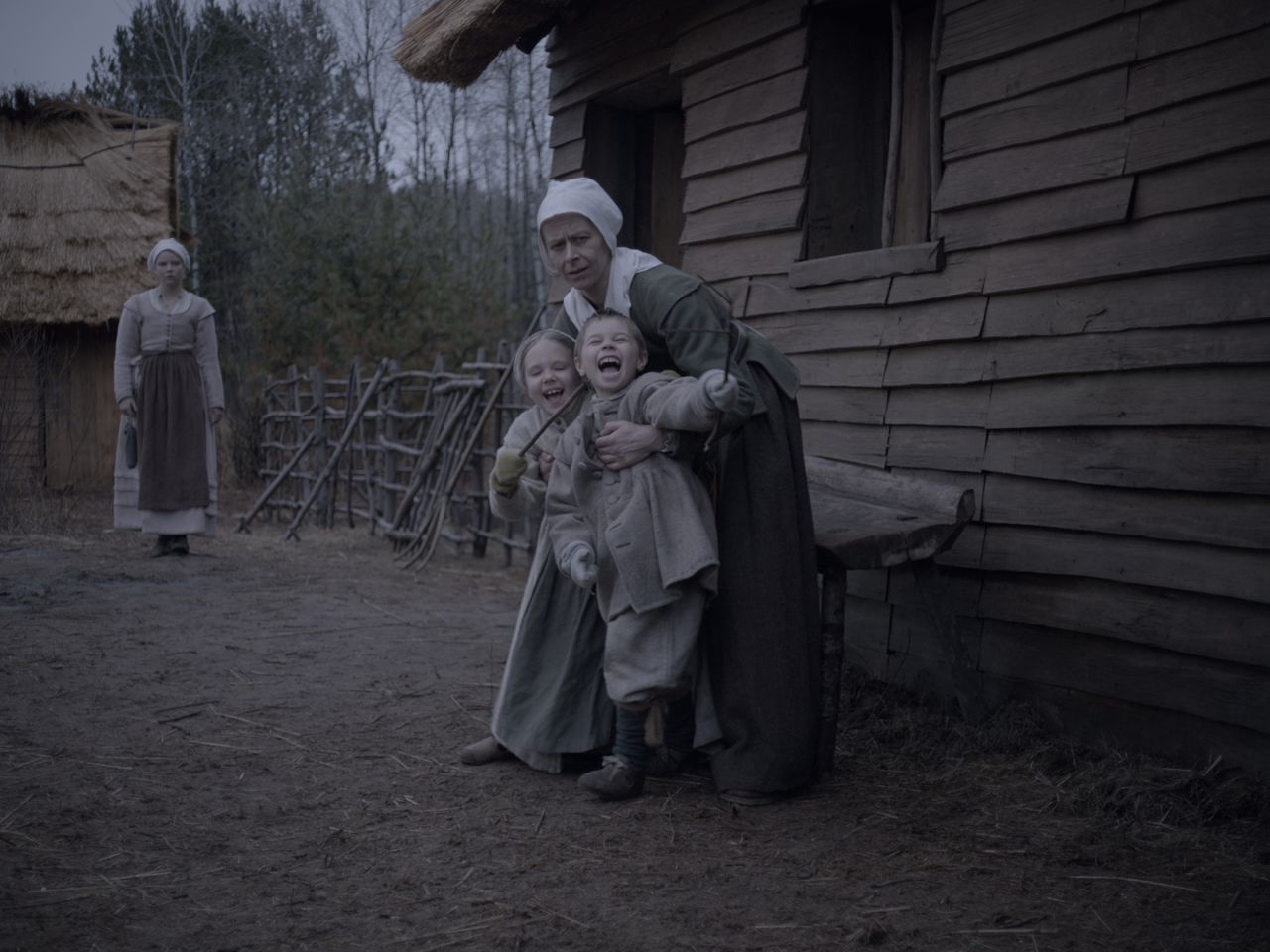Advertisement
Fear Of 'The Witch' In Colonial New England, Imagined Onscreen

There's plenty that beguiles in Robert Eggers' moody film "The Witch," the Sundance Film Festival hit that opens widely in theaters on Friday, Feb. 19.
Masterful in composition and imbued with a deep sense of intimacy, dread and gritty authenticity, it takes place in the 1600's — sometime between the arrival of the Mayflower and the onset of the Salem witch trials — in a New England highland that is bucolic but harsh. There, a family of settlers are banished from the main plantation for vague religious reasons and then struggle to make a go of it. Their cupboards are bare and the fields are barren. Clearly the dream of a better way of life in the New World has listed for these folk.
It doesn't help that William (Ralph Ineson), the able family head who works nonstop in a futile attempt to provide, is saddled with a wife, Katherine (Kate Dickie), who's on the verge of dead weight. She frets incessantly and retains an unproductive desire for all things England. Their oldest child Thomasin (Anya Taylor-Joy), a blonde ingénue on the cusp of womanhood, helps out by tending to the twins (Ellie Grainger and Lucas Dawson) and the infant Samuel while her younger brother Caleb (Harvey Scrimshaw) accompanies William in his daily work on the farm. A hunting sojourn underscores the frailty of their existence, as William's musket misfires when trained on a lone hare. That ominous rabbit and many other things from the woods come back to haunt the exiled clan.
Things turn darker when little Samuel, in the care of Thomasin, disappears. What, or who, took the infant? Eggers gives us a quick glimmer of a red-cloaked figure whisking the swaddled neonate into the woods. It's a terrifying tease reminiscent of Nicolas Roeg's chilling "Don't Look Now." The family, thinking that Samuel was claimed by an animal in the wild, starts to implode. Thomasin gets the brunt of the blame, and responds by announcing that she's signed her name in the devil's book — an utterance not taken lightly by Bible-hugging Puritans.
Eggers is a native New Englander who cut his teeth in the New York theater scene. He makes his feature film debut with "The Witch," which is something of a logical evolution given that his short filmography includes such period-piece short-film adaptations as "Hansel and Gretel" and Edgar Allan Poe's "The Tell-Tale Heart." Here, he tries too hard to play it both ways. Just what is it that's out there in the woods? Is Thomasin partaking in the occult or is this all just a descent into Puritanical madness? We're caught somewhere in the realm of M. Night Shyamalan’s 2004 “The Village” and Piers Haggard’s 1971 outré cult classic “The Blood on Satan's Claw,” but without a tether.

Adding to the conceptual fray is that steely-eyed rabbit who keeps cropping up. And then there's the big black goat who starts escaping his pen far too often. There’s a lot going on in "The Witch," and after another character gets lost in the woods we cross over into "The Exorcist" territory. From there, the film struggles to hold its eerie hex.
Much of the film's success hangs on the nervy choral score by Mark Korven (clearly inspired by Stanley Kubrick's "2001: A Space Odyssey") and its meticulously detailed costumes and set design. Press materials describe it as loosely fact-based, pulled together by Eggers' passionate and extensive research into the era's history and lore. It was filmed, though, in the deep wilds of northern Ontario. The locale’s stark, lonely despair is sharply embossed by Jarin Blaschke's textured cinematography, making this landscape an active player in the torturous slide into human folly and the unknown.
The director’s biggest asset, however, is his talented cast. At junctures, "The Witch" unfurls much like Arthur Miller's "The Crucible." Eggers, clearly tapping into his theater roots, brings this story to the screen — period accents and all — with sharp, theatrical fury.

Ineson and Dickie play off each other seamlessly. As a weary idealist trying to hold the crumbling universe together, William’s lot borders on the Job-like. Katherine’s descent into frenetic delusion drives the action, but it's Taylor-Joy’s Thomasin who breathes a fearful soulfulness into the film, subtly transforming her wide-eyed adolescent into both the woman of the house and something darker.
Taylor-Joy’s’s CV is fairly light (the BBC TV series "Atlantis" being the chief item) but her turn in "The Witch" should change that. Eggers is already seeing his stock rise after winning the best director award at Sundance with this film, which was also placed in nomination for the Grand Jury Prize there. It’s clear the has an eye and talent beyond the rote trappings of genre — the most bewitching parts of this film are the ones that are the least spooky.
Tom Meek is a writer living in Cambridge. His reviews, essays, short stories and articles have appeared in The Boston Phoenix, Paste Magazine, The Rumpus, Thieves Jargon, Charleston City Paper and SLAB literary journal. Tom is also a member of the Boston Society of Film Critics and rides his bike everywhere. You can follow Tom on Twitter at @TBMeek3 and read more at TBMeek3.wordpress.com.
